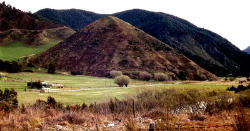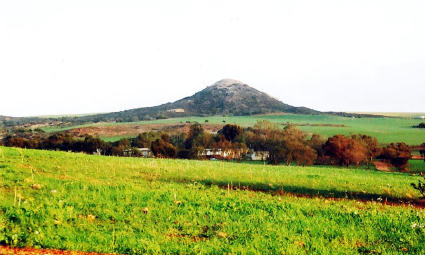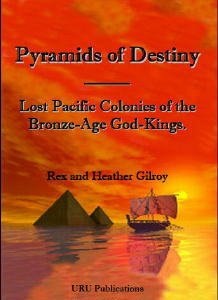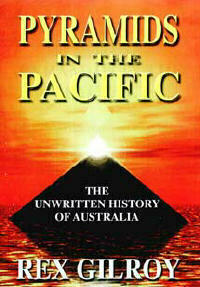
| Pyramids of Destiny – Lost Pacific Colonies of the Bronze-Age God-Kings |
 |
A closer view of the pyramid, which was once the centrepiece of a great coastal Egypto-Phoenician city, the city of Mousa.
Photo copyright © Rex Gilroy 2008. |
Pyramids of Destiny – Lost Pacific Colonies of the Bronze-Age God-Kings
by Rex & Heather Gilroy
Copyright
© Rex Gilroy 2009
| “Australian history is almost always picturesque; indeed it is so curious and strange, that it is itself the chiefest novelty the country has to offer, and so it pushes all other novelties into second and third place. It does not read like history but like the most beautiful lies. Mark Twain: Following the Equator [1891] |
”Every truth passes through three stages before it is recognised. In the first, it is ridiculed. In the second, it is opposed. In the third, it is regarded as self evident.” Arthur Schopenhauer [1788-1860] |
Part Six.
Egypto-Phoenicians in the Pacific.
Chapter Thirty Five.
Pacific Mines of the Lost Pharaohs.Stretching from the Indonesian islands through New Guinea and its Melanesian island neighbours and on into the Central Pacific; as well as southward into New Zealand’s North and South Islands are still to be found the crumbling remains of ancient stoneworks and mining operations, abandoned by Sun-worshipping mineral-seeking colonists who sailed the Pacific in search of gold and other precious metals, on expeditions that would lead them ever eastwards, even to the Americas.
Early 20th century archaeologists who visited java marvelled at massive megalithic structures, by then in ruins and dating back at least 3,000 years. They pondered how the ancient builders had been able to move, lift and position such huge stones, weighing at least several tons.
At this time to the north, in the Caroline Islands, the island of Yap was drawing attention for its plentiful remains of a vanished civilisation – such as embankments and terraces, the remains of ancient cultivation, with ancient roads constructed of neatly paved stone blocks, megalithic graves and stone platforms, megalithic temples, stone wharves and other marvels.
And in Papua New Guinea even today, there can still be seen huge earthworks of an agricultural people, whose technology was far superior to that of the Melanesian tribes of the region, for they left behind them pottery fragments and polished stone implements, as well as megalithic stoneworks that were beyond the abilities of the Stone-Age inhabitants.
In 1907 Messrs Seligman and Joyce wrote as follows: “Within the past few years discoveries have been made in British New Guinea of pottery fragments and implements of obsidian and stone, which differ entirely in type from the pottery and implements used at the present time by the inhabitants of the localities in which the finds were made”.
At the beginning of the 1920s early European gold prospectors were talking about apparent ancient open-cut operations uncovered in remote areas, at which Mediterranean-style pottery fragments had been uncovered. Just prior to this, in 1919, Mr E.W.P. Chinnery presented a paper, “Stone-work and Goldfields in British New Guinea” to the Journal of the Royal Anthropological Institute, in which he enumerated all the known discoveries of antiquities found in British New Guinea and the neighbouring parts of German New Guinea.
These included ‘sacred’ stones, standing stones, stone circles, spiral scrolls, and human face representations; fragments of ornamented pottery, stone carvings of birds with snake-like heads, human and animal figures; pestles and mortars of granite, lava, and other stone, in various shapes, some of them carved; perforated quartz implements in various forms, some of which have been converted into stone-headed clubs, and implements of obsidian and other stone “not used by existing races”.
Sir Grafton Elliot Smith, Professor of Anthropology at Manchester University, [see chapter 10] as we have seen, had already seen enough of these kind of relics for himself, to declare that there was an Egyptian influence in the native cultures of the region and that it went back at least 2,000 years. Indeed, it was older than that.
Stone pyramids and other megalithic structures as well as stone images were discovered on Fiji and Tonga, San Cristoval and Samoa. Similar stoneworks and terraced structures of pre-Polynesian origin were discovered in New Zealand by the early European settlers [to be discussed later]. The early investigators by-passed Australia, which they believed had nothing of importance to the ancients. How wrong they were!
Main Book Index | Mysterious Australia Homepage | URU Homepage | Australian Yowie Research Centre

